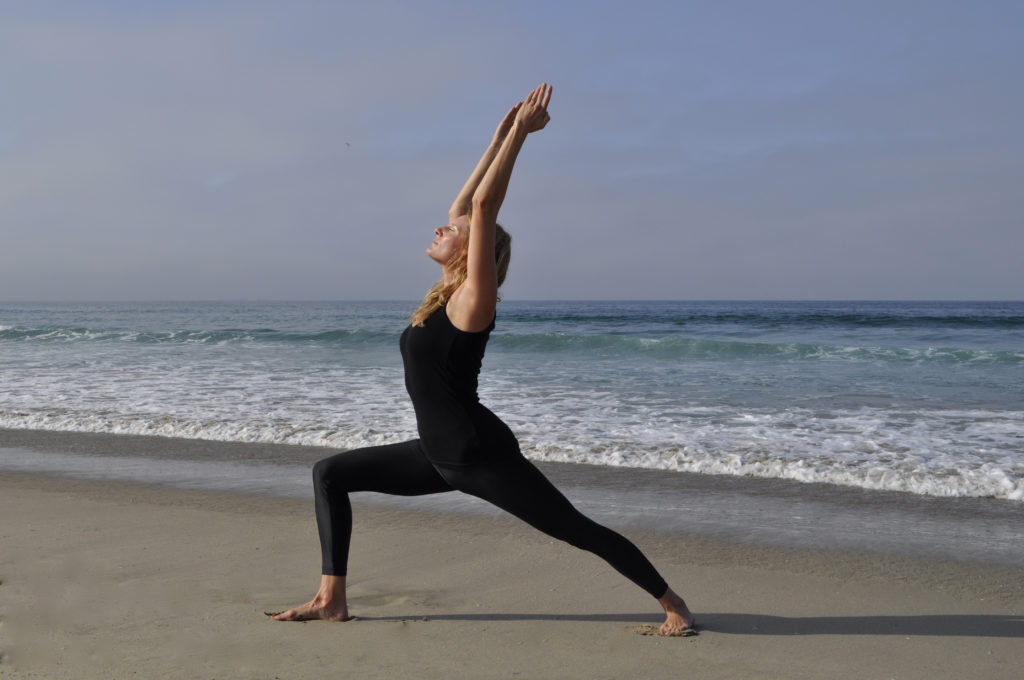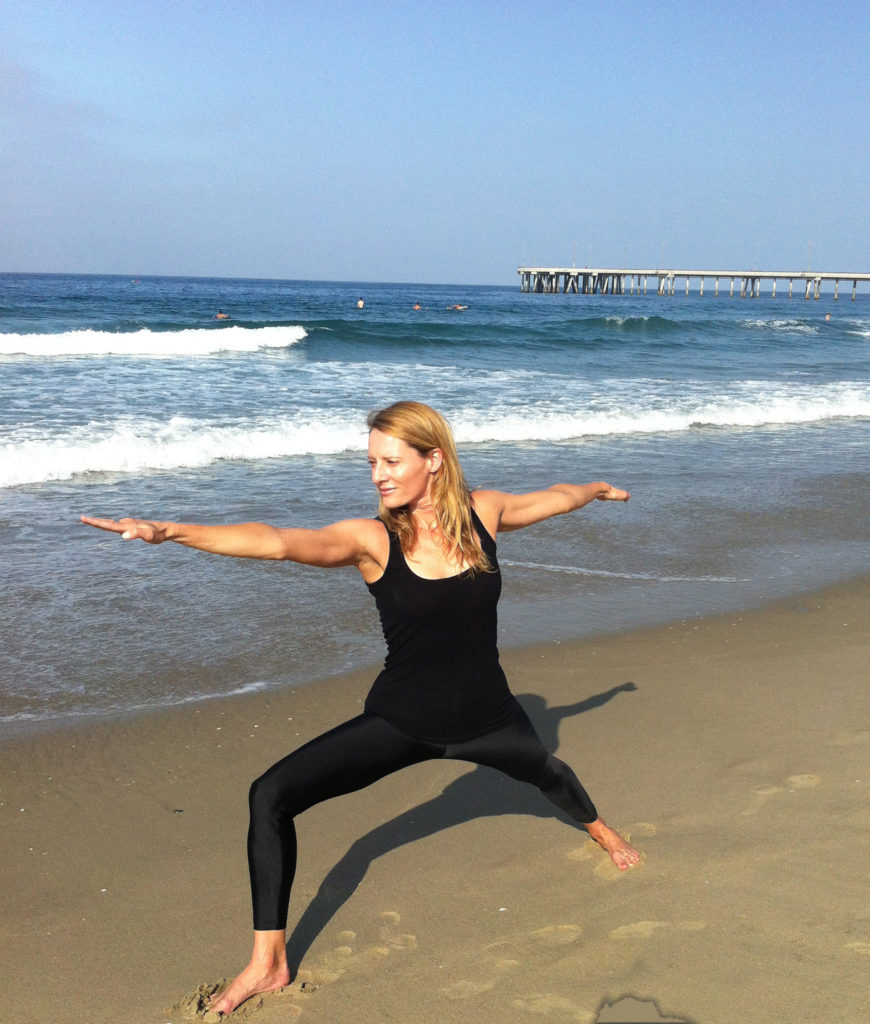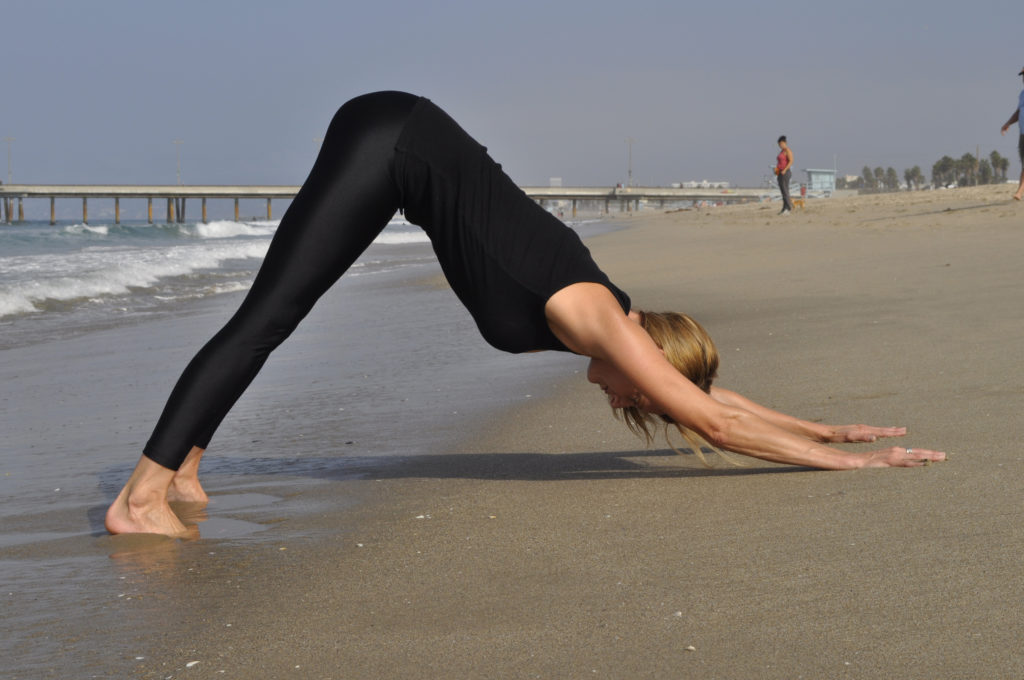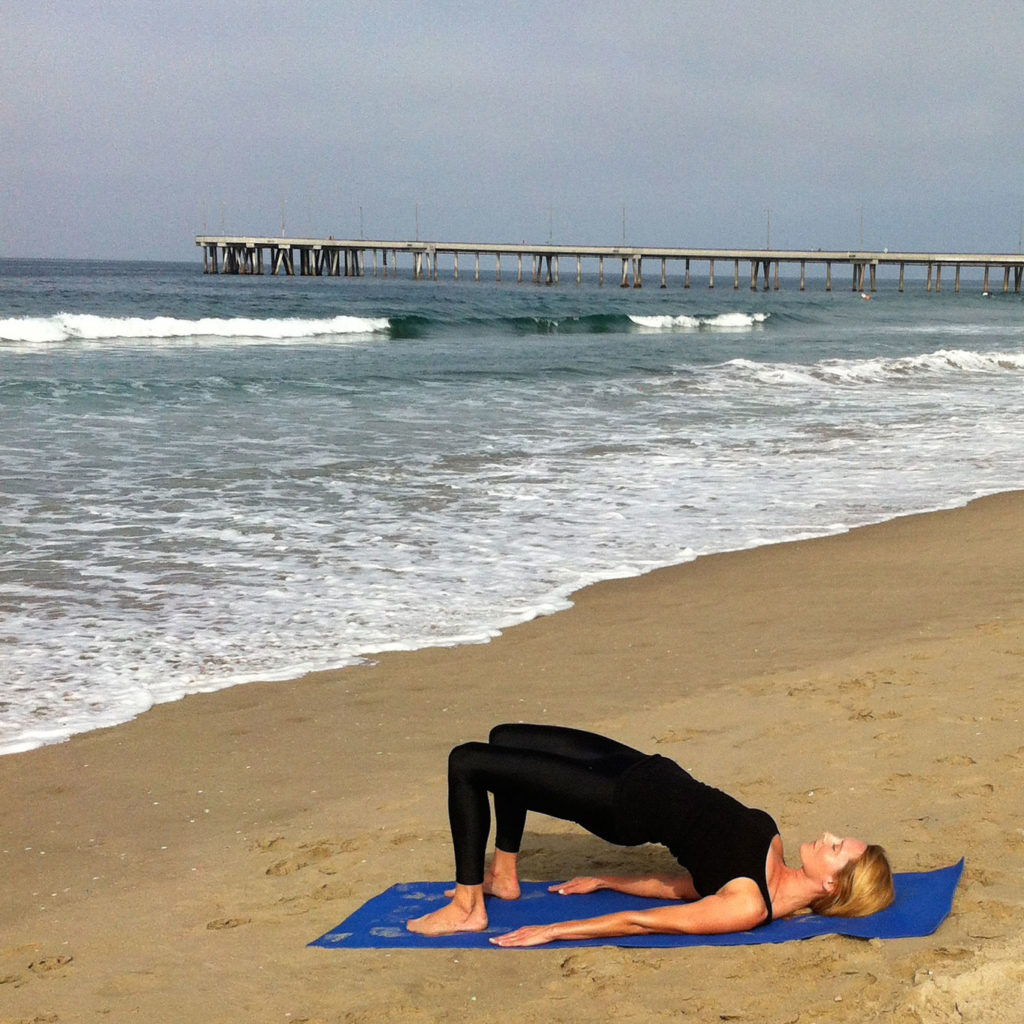5 Gentle (and Highly Beneficial!) Yoga Poses to Do Every Day
- Published: Thursday, September 13th 2012
- in Fitness
Regardless of whether yoga is practiced for an hour and a half or five to 10 minutes, there are a plethora of healthful benefits to reap from even the simplest of poses. We asked Sandie West, CEO of Creative Chakra Spa & Yoga Studio, an oceanfront, 5,500-square-foot holistic spa and yoga studio in Marina Del Rey, California, for her go-to poses. From toning muscles and improving digestion to relieving back pain and stretching the spine, here are her picks—and tips—for five gentle and easy poses that are beneficial and fun to do every day.
1. Warrior One

Benefits: Tones the abdominal muscles, relieves acidity and improves digestion, strengthens the bladder and reduces heavy menstruation. Strengthens the back and relieves backache and sciatica.
How-to: From standing pose, straddle both feet about four feet apart, turn your torso and your right leg and foot 90 degrees to the right and turn your left leg and foot to the right 45 degrees. Raise arms in front of you to the sky with palms facing each other and pull the shoulder blades down the back; lunge into your right leg.
Tips for working in the pose: Pull shoulder blades down the back and breathe, and press shoulders away from ears — this will relieve a lot of tension in the neck, shoulders and back. As you push your shoulder joints into the armpits, stretch your arms up higher. Let your weight rest on the inner edge of the left buttock. Avoid straining your right knee by turning your right kneecap toward the little toes of the right foot.
2. Warrior Two

Benefits: Strengthens the legs and arms, opens the chest and shoulders, tones the abdomen. Reduces fat around the hips, relieves lower backache, improves breathing capacity for expanding the chest. Helps in the treatment of a prolapsed or slipped disc.
How-to: From warrior one, part the arms bringing one forward and one behind, and come into your lunge deeper with the front foot, gaze over the front hand, rotate the left hip to the left and right hip to the right, press the outside of back foot into the ground.
Tips for working in the pose: Make sure the right knee stays tracked over the middle toe of the right foot. Don’t allow the knee to drift over to the left and keep the torso from moving right or tilting forward.
3. Down-Dog

Benefits: Builds strength in the upper arms and opens the back, neck, chest, hips and shoulders; stretches the calves and ankles while strengthening the legs at the same time. Slows the heart and calms the brain while stimulating the nervous system and rejuvenates the whole body.
How-to: From warrior two, windmill the left arm up and over to the floor, stretching while doing this, and move the right leg back to meet left leg; turn both feet to the front. Stretch fingers wide open on the floor, pressing away from the wrists and let the chest pull to the floor. Press heels to the floor and press sit bones in the buttocks to the sky.
From standing: Fold into a forward fold and bring feet behind you about three feet from hands.
Tips for working in the pose: Keep weight off wrists by pulling up the arms away from the wrists and shoulders down the back. Keep thighs parallel to each other, stretch your upper arms and push your torso towards your legs.
4. Child’s Pose

Benefits: A healing, restful pose that gently stretches the spine, releases the lower back and helps with digestion. It can be particularly soothing when you feel cold or anxious. In this pose, your head is lower than your heart, so you receive more circulation to the face, and when practiced regularly, it is very beneficial to your entire mind and body.
How-to: From down-dog, bring your knees down to kneel on the ground; stretch arms in front of you and rest forehead on the ground.
Tips for working in the pose: Press the heels to the buttocks evenly. This post can relieve back and neck pain when the head is supported by a bolster (or rest the forehead on a cushion). When knees are fairly close together, rocking gently side to side can help stimulate the flow of blood and lymph fluids in the upper chest and breast tissues.
5. Supported Bridge

Benefits: This supported rejuvenating backbend can be practiced safely by beginners and will open up your chest and keep your spine flexible. It also stretches and strengthens the chest, neck, spine, hips, buttocks and hamstrings. Legs can also be rejuvenated with improved circulation, and it also helps to alleviate stress and mild depression. The pose stimulates the lungs and thyroid glands and improves digestion; reduces backache, headache, fatigue, anxiety and insomnia; and relieves symptoms of asthma and high blood pressure, hypertension, osteoporosis and sinusitis.
How-to: Lie on the floor, legs bent and hips-width apart, feet flat on the floor, parallel and close to the buttocks. Keep the shoulders down and palms down. Bend the knees and catch the ankles, inhale and raise the trunk, lifting and curving upwards.
Distribute your weight equally on the inside and outside of your feet and move your breastbone towards your chin, keeping your chin lifted; buttocks should be firm, but not clasped. To come out of bridge pose, slowly roll your spine down onto the floor.
Tips for working in the pose: Raise both the front and back of the body to increase the arch, press the shoulders and forearms down to lift the trunk and press the heels down to stretch the legs. If you are having trouble holding this posture, you can clasp your hands behind your back and firmly press your arms into the floor, shoulder blades shifted down along the spine. Hold this pose for five to 15 breaths.
Photos courtesy of Emma Catherwood


